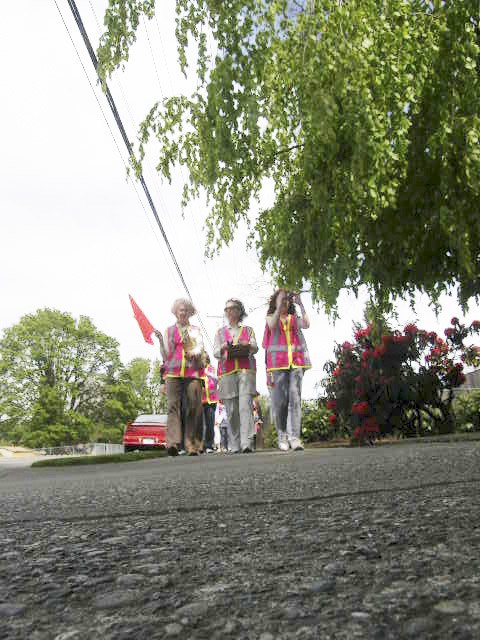According to the 2009 National Household Travel Survey, less than 13 percent of students between the ages of 5 and 14 walked or biked to or from school, compared to 48 percent in 1969.
In the past 30 years, childhood obesity rates have more than tripled while the number walking and biking to school has dropped.
The folks at the Bicycle Alliance of Washington, Feet First and the Auburn School District are doing something about it, right here and now. Recently, parents, students, Pioneer School and city staff joined BAW and feet First in hoofing the paths to and from school, noting problems and scouting out ways to make things better.
By eyeing the good, the bad and the downright ugly, the walkers documented problems and suggested ways to create a walkable, bikeable, safe neighborhood.
“Somebody take a picture of that?” asked Gia Clark, active communities mapping specialist at Feet First, as the walkers made their way first along 21st Street Southeast on a Tuesday afternoon. “Anybody write that down? That segment of sidewalk is missing, so it’s a little bit difficult to get kids to walk safely and community members to walk safely.”
Public Health – Seattle & King County provided funding through a Communities Putting Prevention to Work (CPPW) grant.
The Bicycle Alliance and Feet First have been working with six school districts in South King County, and their work includes Pioneer, Terminal Park and Washington elementary schools in Auburn.
Several years ago Pioneer Elementary reduced the number of school buses from six to one, said Principal Debra Gary.
The school worked with the Washington State Department of Transportation, the City of Auburn and the Auburn School District to write a grant, which allowed the addition of walking paths, where kids had essentially been walking in the street. Previous to that, the kids didn’t have any sort of safe paths along F Street that kept them safe from traffic.
“They began to walk in the mornings, they began to walk in the afternoon, they walked in the rain,” Gary said. “Suddenly, we went from parents taking them out and dropping them off where the school bus stopped to kids walking.
“Most people are walking, which is really an incredible feat.”
John Vander Sluis, Safe Routes to School program manager with the Bicycle Alliance of Washington, said the organization will “take all the information and compile everybody’s notes, and they’ll give sort of their top five observations.”
The result will be a report containing recommendations and visions about how the neighborhood could promote more walking and biking, especially for kids going to school. The school district will use the report prioritize infrastructure improvements and plan events to teach and encourage students to walk and bike.



